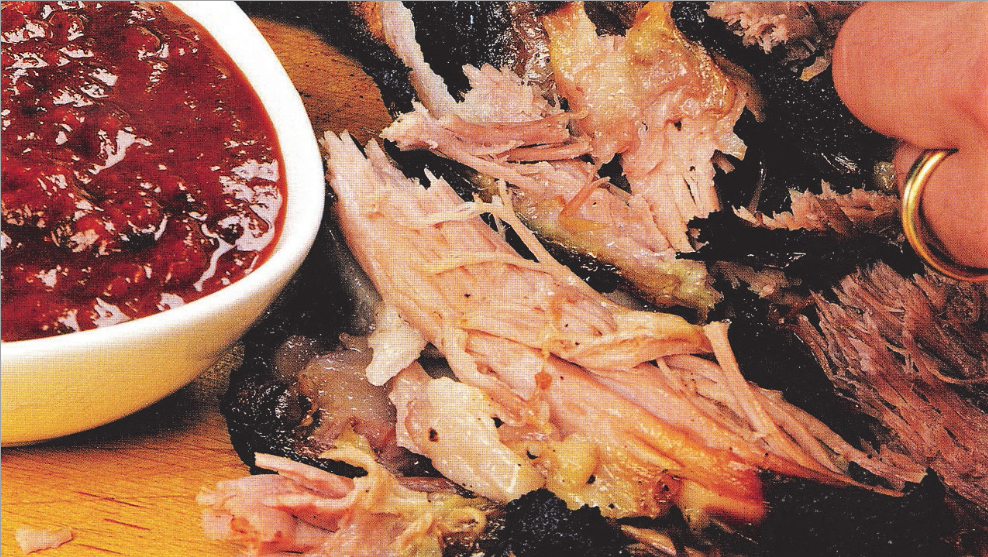Live Better
SMA and the new miracle drug Spinraza

Spinal muscular atrophy, or SMA, is a genetic disease that attacks nerve cells in the spinal cord. These nerve cells, known as motor neurons, communicate with the voluntary muscles in the body, such as those in the arms and legs. As more neurons are lost, muscles start to weaken and breathing, crawling, swallowing, and walking can become more difficult. It also can be difficult for those with SMA to control movements in their heads and necks. Though SMA runs in families, parents can exhibit no symptoms but still carry the gene. There are many types of SMA, and, according to the National Institute of Neurological Disorders and Stroke, the type of SMA is determined by the age of onset and the severity of symptoms. SMA Type I is evident at birth or within the first few months of a child being born. Symptoms may include difficulty swallowing, feeble movements of the arms and legs, loose limbs and trunk, impaired breathing, and a weak sucking reflex. SMA Type II is evident between the ages of six and 18 months, and the legs are typically more impaired than the arms. An early indicator may be a baby who is not crawling or walking. SMA Type III may be evident when a child reaches his or her toddler years, but sometimes does not appear until adolescence. When a child has SMA Type III, he or she may have trembling fingers and may experience difficulty getting up from a sitting position. Children with SMA Type II or Type III are at an increased risk of respiratory infections.
What causes SMA?
According to the Muscular Dystrophy Association, chromosome 5 SMA, the most common form of SMA, is caused by a deficiency of SMN, a motor neuron protein. This protein is necessary for normal motor neuron function, and a deficiency of SMN is caused by mutations on chromosome 5 in the SMN1 gene. Mutations in other genes may also cause SMA, and such cases are referred to as non-chromosome 5 SMA.
What are the symptoms of SMA?
There are various types of SMA, and the symptoms can vary depending on the type of SMA a person has. The following are some of the symptoms associated with the various types of SMA.
- Type 1: Type 1 is the most severe type of SMA. When a child is type 1, he or she may have difficulty supporting his or her head and sitting without help. Difficulty swallowing and weakness in the arms and legs may also occur. The muscles that control breathing also can be compromised when a child has type 1 SMA, and breathing problems can affect a child’s life expectancy.
- Type 2: Type 2 SMA typically affects the legs more than the arms. Type 2 SMA affects children between six and 18 months of age, and such kids may be able to sit, stand or walk with help.
- Type 3: The mildest form of SMA, type 3 may be referred to as juvenile SMA. Children with type 3 can often stand or walk without help, but they may have difficulty climbing stairs, getting up from a chair or running.
- Type 4: Type 4 SMA begins in adulthood, and men and women may experience muscle weakness, twitching or breathing problems. Physical therapy can help men and women better manage their symptoms, which typically only affect the upper arms and legs.
Recently the FDA approved an amazing new drug Spinraza to treat symptoms of SMA and prolong these life of individuals taking Spinraza. With a few injections, patients with SMA may be able to gain muscle strength and live longer by a year or more. It cost $125,000 an injection, and in the first two months one takes 4 injections in the spine. That’s half a million dollars for the first four shots. Subsequent costs for this possibly lifelong therapy are expected to be about $375,000 annually, with about three injections required each year. While this may seem extremely expensive the drug was developed to save lives, along with some resources available to help individuals requiring the drug. With coverage being more readily available to those effected the most, starting with SMA type I. Remember if you are trying to obtain Spinraza use every resource available at your disposal and educate yourself on the drug, available resources, and your healthcare. Don’t be afraid to ask questions and challenge your neurologist who would prescribe Spinraza along with your insurance representative, and if you have to, seek out a social worker for assistance. Be your own advocate. Take into account this drug has been developed and approved in a significantly short amount of time. Spinraza is for a relatively low percentage of the population, lots of money and resources were put into the development of this drug. For more information and resources go to SMAnewstoday.com. Remember to connect yourself with other individuals with SMA to share resources and connect with others who are going through the same thing you may be experiencing with SMA.
Parents can also learn more about SMA by visiting the Muscular Dystrophy Association online at www.mda.org & www.curesma.org
Live Better
Physical movement can help fight chronic diseases

Physical activity is a valuable tool in the fight against chronic disease and other conditions. In fact, the Cleveland Clinic highlights physical activity among its nine ways to prevent disease in an effort to live a long and rewarding life.
Children, adolescents, young adults, and even men and women in middle age may not face too many physical hurdles when they try to exercise, but seniors are not always so lucky. Aging men and women with mobility issues may wonder if they can reap the rewards of physical activity, and thankfully there are many ways to exercise even if getting up and going isn’t as easy as it might have been in years past. Sometimes referred to as “aerobic exercise” or simply “cardio,” cardiovascular exercise is an umbrella term that encompasses a wide range of physical activities that raise the heart rate and improve endurance. Seniors with mobility issues can look to various forms of cardio for inspiration as they seek to be more physically active without compromising their overall health.
· Walk your way to a healthier you. Walking is a form of cardiovascular exercise that is ideal for older adults with mobility issues because it need not be physically demanding and it’s safe to walk just about anywhere. Walking in a place such as a local park can be particularly good for older adults because they can take periodic breaks on benches if aches, pains or stiffness is affecting their ability to keep moving.
· Take up swimming. Swimming might be tailor-made for seniors with mobility issues because it’s a great workout and exercising in water tends to be less taxing on muscles and joints. The Cleveland Clinic notes that swimming promotes heart health, strengthens the lungs, helps to burn calories, and builds muscle, among other benefits. And many seniors find swimming is just as fun in their golden years as it was in their youth, which means aging adults might not face problems with motivation when the time comes to get in the pool.
· Use an exercise bike or portable pedal exerciser. Cycling is a wonderful exercise but one that seniors with mobility issues may feel is no longer possible. If doctors advise against riding a traditional bike, an exercise bike or portable pedal exerciser can provide many of the benefits of cycling without as great a risk for accident or injury. A portable pedal exerciser can be carried to a park, where seniors can still spend time in the great outdoors, which is one of the most appealing reasons to get on a bike and go.
· Take beginner yoga or tai chi. HelpGuide.org notes that gentle yoga or tai chi can help to improve flexibility and reduce stress and anxiety. Though yoga and tai chi can provide as much demanding physical activity as individuals allow, beginner classes in each discipline don’t require much movement but do provide enough for seniors hoping to be less sedentary.
Even seniors with mobility issues can find safe and effective ways to be more physically active. Prior to beginning a new exercise regimen, seniors with mobility issues are urged to discuss activities with their physicians.
Live Better
Connected communities: Reducing the impact of isolation in rural areas

(Family Features) Throughout history, humans’ ability to rely on one another has been crucial to survival. Despite modern developments that help individuals live with minimal human engagement, the human need to connect remains.
However, in many parts of America, a trend toward isolation is emerging. Over the past two decades, people are spending more time alone and less time engaging with others in person, according to data from the Office of the U.S. Surgeon General. One segment of Americans at particular risk of social isolation, loneliness and their negative impacts are select populations who live in rural areas.
“There is an urgent need to take action and improve mental health in rural America,” said Jeff Winton, dairy farmer and founder and chairman of Rural Minds, a nonprofit mental health advocacy organization that partnered with Pfizer to raise awareness about the physical and mental risks of social isolation. “Challenges to mental health can be inherent in a rural lifestyle, including a belief in self-reliance as a virtue, fear of judgment and difficulty getting an appointment with a limited number of mental health professionals, among others.”
Many Americans are increasingly spending more time alone according to the American Time Use Survey. They are increasingly more likely to take meetings, shop, eat and enjoy entertainment at home, making it easier for them to stay within their own four walls and avoid social interactions.
Authentic human connection is a basic but often unacknowledged necessity for health, “as essential to survival as food, water and shelter,” according to the U.S. Surgeon General’s Advisory on the Health Effects of Social Connection and Community.
Understanding Social Isolation
According to the Centers for Disease Control and Prevention (CDC), about one-third of U.S. adults reported feeling lonely and about one-fourth said they don’t have social and emotional support (the basis of social isolation).
The concepts of social isolation and loneliness can go hand-in-hand, but the two are actually quite different.
Social isolation is defined by an absence of relationships or contact with others. Someone experiencing loneliness may or may not have social connections, but lacks feelings of closeness, support or belonging. Despite the distinction, both can have a negative impact on a person’s mental and even physical health.
Several factors can influence a person’s risk for social isolation and loneliness.
“Social connection is a dynamic that changes over time,” said Nikki Shaffer, senior director, occupational health and wellness, Pfizer. “Transient feelings of loneliness or solitude may be beneficial because they can serve as motivation to reconnect. However, chronic loneliness (even if someone is not isolated) and isolation (even if someone is not lonely) can represent significant health concerns.”

Isolation in Rural America
Compared to people who live in urban areas, many rural Americans experience higher rates of depression and suicide but are less likely to access mental health care services, according to the “Health Disparities in Rural America: Current Challenges and Future Solutions” study published in “Clinical Advisor.” What’s more, CDC data shows suicide rates among people living in rural areas can be 64-68% higherthan those in large urban areas.
Rural areas have 20% fewer primary care providers compared to urban areas, according to a report in JAMA, and the Health Resources and Services Administration reports more than 25 million rural Americans, more than half of rural residents, live in mental health professional shortage areas.
Among rural counties, 65% lack a psychiatrist. Nearly 30% of rural Americans don’t have internet access in their homes, which complicates the option for telehealth. These figures from Rural Minds exemplify the challenges facing rural America.
“Some people in rural communities still don’t understand or accept that mental illness is a disease,” said Winton, who grew up on a rural farm. “Rather, a mental illness can often be viewed as a personal weakness or character flaw. A lot of the stigma around mental illness results in unwarranted shame, which adds to the burden for someone already suffering from mental illness.”
Health Impacts of Social Isolation
Loneliness is far more than just a bad feeling; it harms both individual and societal health. In fact, loneliness and social isolation can increase the risk for premature death by 26% and 29%, respectively.
Lacking social connection can increase the risk for premature death as much as smoking up to 15 cigarettes a day or drinking six alcoholic drinks daily.
In addition, poor or insufficient social connection is associated with increased risk of disease, including a 29% increased risk of heart disease and a 32% increased risk of stroke.
Social isolation is also associated with increased risk for anxiety, depression and dementia. Additionally, a lack of social connection may increase susceptibility to viruses and respiratory illness.
Learn more about the impact of social isolation, especially on residents of rural areas, and the steps you can take to reduce isolation and loneliness by visiting ruralminds.org.
Boost Your Social Connections
Take a proactive approach to combatting social isolation and loneliness with these everyday actions that can promote stronger social ties.
- Invest time in nurturing your relationships through consistent, frequent and high-quality engagement with others. Take time each day to reach out to a friend or family member.
- Minimize distractions during conversation to increase the quality of the time you spend with others. For instance, don’t check your phone during meals with friends, important conversations and family time.
- Seek out opportunities to serve and support others, either by helping your family, co-workers, friends or people in your community or by participating in community service.
- Be responsive, supportive and practice gratitude. As you practice these behaviors, others are more likely to reciprocate, strengthening social bonds, improving relationship satisfaction and building social capital.
- Participate in social and community groups such as religious, hobby, fitness, professional and community service organizations to help foster a sense of belonging, meaning and purpose.
- Seek help during times of struggle with loneliness or isolation by reaching out to a family member, friend, counselor, health care provider or the 988 crisis line.
Photos courtesy of Shutterstock
SOURCE:
Rural Minds and Pfizer
Live Better
Homeowners handbook: Navigating new HVAC refrigerants

(Family Features) Homeowners may not realize it, but one compound impacts their lives nearly every day: refrigerant. Capable of transforming from liquid to gas and back again, it absorbs and transfers heat as a key part of air conditioning and heat pump systems that keep you comfortable no matter the weather.
As part of your air conditioner or heat pump system, it helps transfer heat and humidity out of your home for cooling or draws heat from outdoor air and brings it inside for heating. However, while concerns about climate change heat up, government leaders are enacting policies that enforce greater control over the anticipated global warming potential (GWP) of refrigerants.
In fact, the Environmental Protection Agency (EPA) is limiting the GWP of refrigerants in equipment starting in 2025. At the same time, the EPA is implementing a phasedown on the supply of existing, higher GWP refrigerants.
The changes include a phasedown of high-GWP refrigerants commonly used in home air conditioning and refrigeration, introduction of alternative refrigerants with lower GWP that maintain efficiency and requiring manufacturers to comply with new standards for energy efficiency and environmental impact.
Despite these policy updates, you may not necessarily need a new air conditioner or heat pump. Here’s what homeowners need to know, courtesy of the experts at Carrier, a world leader in high-technology heating, air conditioning and refrigeration solutions:
Environmental Awareness and the Impact on Existing Home Systems
Transitioning away from high-GWP refrigerants contributes positively toward reducing your carbon footprint. These anticipated changes aim not only at reducing environmental impact but also at promoting technological advancements in heating and cooling solutions that benefit both consumers and the planet over time. If you have an existing system using older refrigerants like R-22 or R-410A, it can still be serviced; however, it’s possible repair costs may increase due to reduced availability.
Maintenance and Servicing
Regular maintenance becomes more crucial as systems age. Ensure your HVAC technician is knowledgeable about the new requirements and safely handling different types of refrigerants.
Considerations for New Purchases
When purchasing a new air conditioner or heat pump, be sure to check for energy efficiency ratings that align with the updated regulations and look for models using low-GWP refrigerants. For example, Puron Advance from Carrier will replace existing refrigerants in all its residential ducted and ductless and light commercial products. This innovative refrigerant, also known as R-454B, not only meets the EPA’s anticipated GWP limits for refrigerants but exceeds the new requirements with a GWP of 466, a 75% reduction compared to R-410A.
Incentives and Rebates
If you’re shopping for a new air conditioner or heat pump, keep an eye out for government incentives or rebates aimed at encouraging homeowners to upgrade their systems in compliance with new standards.
Consult Professionals
Owning a home is a lot of work on its own, and EPA regulations on your cooling and heating systems may be the furthest thing from your mind. If you believe you’re due for service or a new system, engage HVAC professionals – like the trusted experts at Carrier – who are up to date on regulatory changes. Always check local regulations for specific details applicable in your area since policies can vary by region beyond federal guidelines.
To find more information on the changes or connect with an HVAC professional, visit Carrier.com/Residential.
SOURCE:
Carrier
-

 NEWS3 years ago
NEWS3 years ago2 hurt, 1 jailed after shooting incident north of Nocona
-

 NEWS2 years ago
NEWS2 years agoSuspect indicted, jailed in Tia Hutson murder
-

 NEWS2 years ago
NEWS2 years agoSO investigating possible murder/suicide
-

 NEWS2 years ago
NEWS2 years agoWreck takes the life of BHS teen, 16
-

 NEWS2 years ago
NEWS2 years agoMurder unsolved – 1 year later Tia Hutson’s family angry, frustrated with no arrest
-

 NEWS2 years ago
NEWS2 years agoSheriff’s office called out to infant’s death
-

 NEWS2 years ago
NEWS2 years agoBowie Police face three-hour standoff after possible domestic fight
-

 NEWS3 years ago
NEWS3 years agoDriver stopped by a man running into the street, robbed at knifepoint








